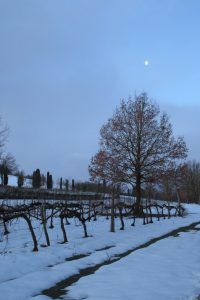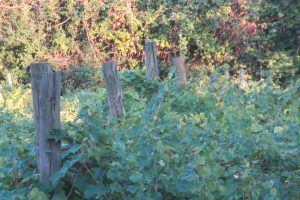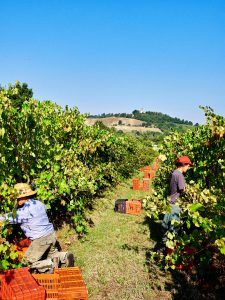Diary 2019
The intermittent summer rains have slowed down the maturation bringing alcoholic lightness and deep aromatic expression of the varieties.
the vintage
A not too harsh winter and a spring with the right amount of rain has allowed a vigorous vegetative restart and a good use of the vineyards.
The anomalous persistence of heavy rains also in August slowed down the ripening process increasing the risk of fungal diseases of the bunch.
As in the previous year, the persistent humidity has committed us to the prevention of vine diseases with frequent mowing interventions to encourage the airing of the bunches. The research and selection of new natural extracts has made it possible to use less copper and increase the effectiveness of prevention in the vineyard.
The anomalous persistence of the rains between late August and early September then directed us towards a rigorous selection of the bunches in the vineyard, completely avoiding the harvest of the areas most damaged by disease.
the vineyard
Like 2018, the high vegetative vigor with good fruiting has brought good protection of the bunches from sunlight, preserving the acidity and aromas.
The accumulation of sugars was slow and inconsistent during the last ripening phase, prolonging the end of the harvest at the end of September, an event that reports on the harvests of twenty years ago.
the harvest
The harvest was manual as always, discontinuous in the plots for the selection of the most suitable areas for each wine. The presence of diseases has forced us to renounce the harvest of the most humid areas, particularly affected by Botrite with a meticulous selection of the grapes on the field.
the grapes
The grapes that were selected for the 2019 harvest maintained a good acidity and an unparalleled aromatic expression of the vines without however reaching the highest alcoholic grades due to incessant rains that imposed a very laborious harvest and more time to select the better bunches than waiting for the increase in sugar levels.
in the cellar
Our manual racking technique from the cap of the fermenting skins has allowed us to control maceration by controlling the risk of potential oxidations typical of such humid vintages. The wines obtained are particularly distinguished by the aromatic expression of the different varieties and the alcoholic lightness, indicating a difficult and very careful way in the cellar to be able to transfer all this work without preservatives and without sulfur dioxide to the bottle you will discover.


 the vintage
the vintage the vineyard
the vineyard the harvest
the harvest